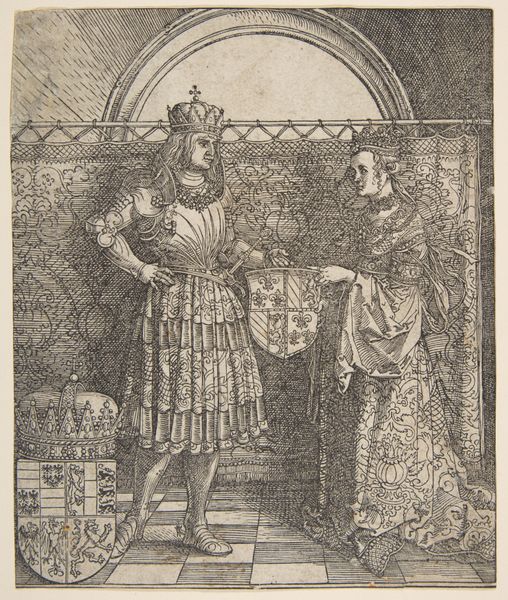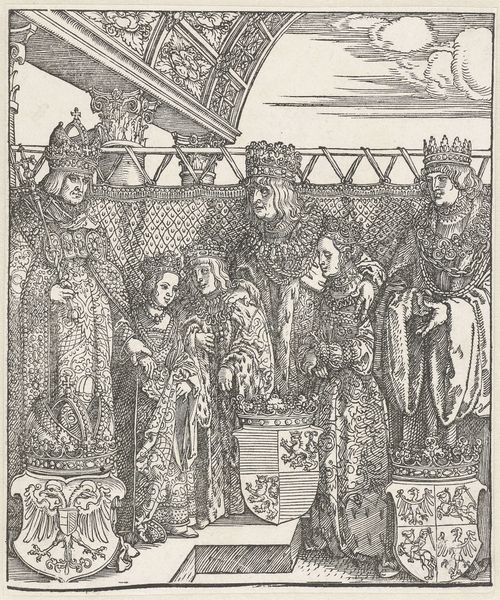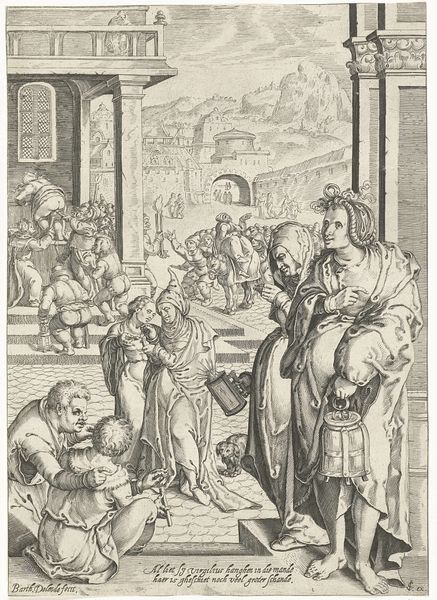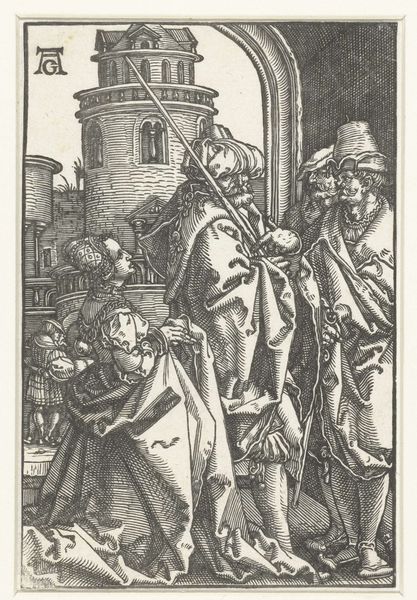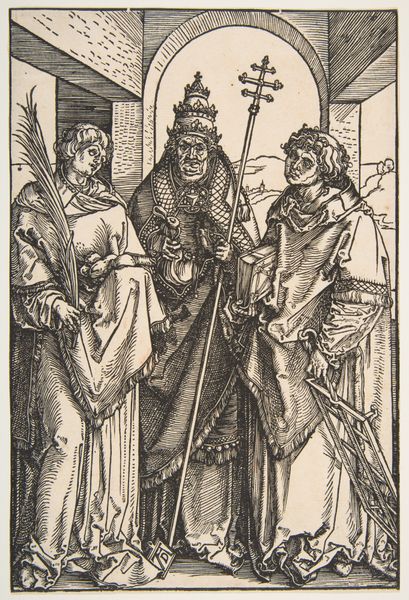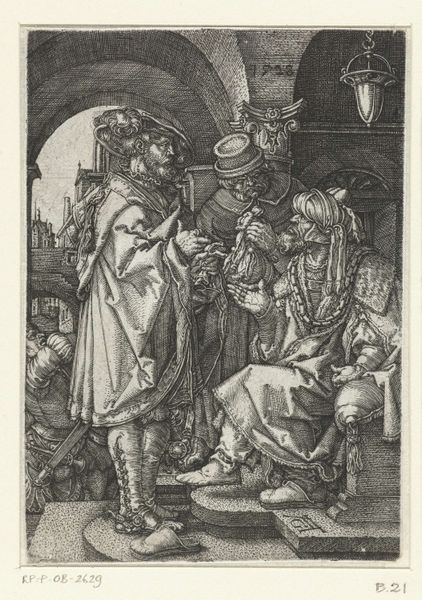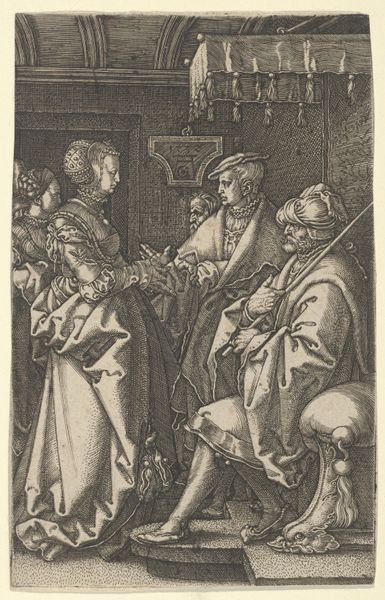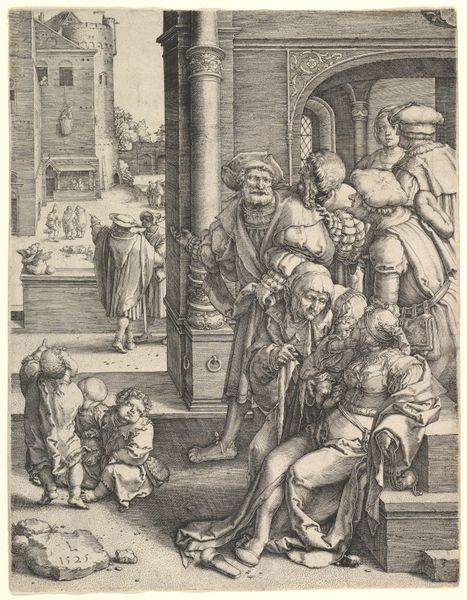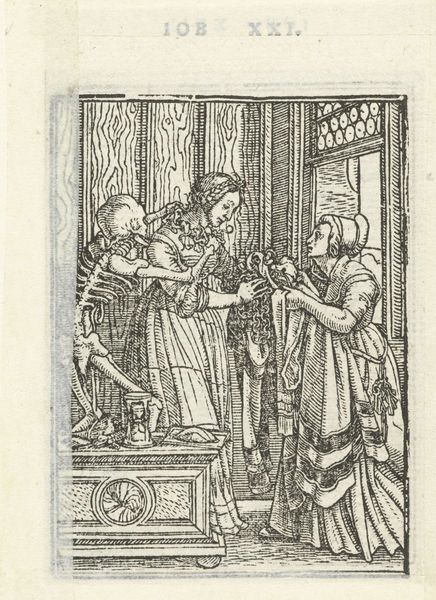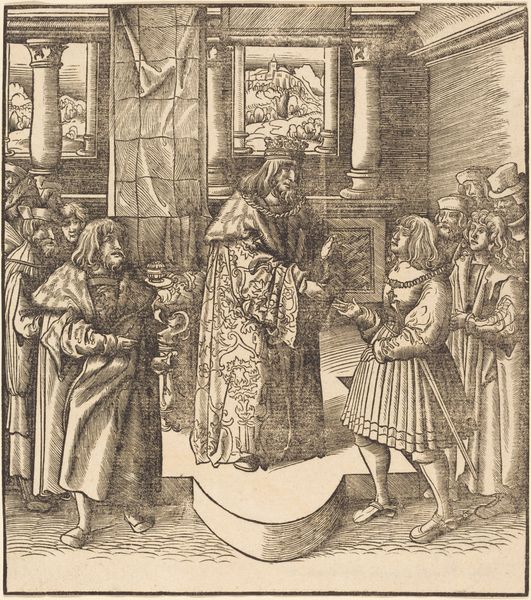
Het Spaanse huwelijk: Filips de Schone trouwt met Johanna van Castilië 1515
0:00
0:00
print, engraving
#
portrait
#
pen drawing
#
mechanical pen drawing
# print
#
pen illustration
#
pen sketch
#
old engraving style
#
figuration
#
line
#
history-painting
#
northern-renaissance
#
engraving
Dimensions: height 176 mm, width 149 mm
Copyright: Rijks Museum: Open Domain
Albrecht Dürer’s woodcut portrays the marriage of Philip the Handsome to Joanna of Castile. Dominant are symbols of power: crowns, heraldic shields, and imperial eagles, each laden with historical and political meaning. Observe the heraldic shields presented by Joanna. These emblems, far from being mere decoration, are declarations of lineage and ambition. Heraldry, emerging from the medieval battlefield, became a visual language of power, its symbols—lions, eagles, and fleurs-de-lis—evoking bravery, dominion, and divine right. Think of the Roman eagles, emblems of military might, reborn in the Holy Roman Empire, or the fleur-de-lis, a symbol of French royalty, echoing across centuries from religious banners to royal decrees. These symbols evoke a sense of continuity, a link to ancestors, and a claim to a predestined future. This psychological aspect of heraldry lies in its ability to tap into our collective memory, conjuring feelings of belonging and historical weight. As we see here, the symbols are not static but cyclical, resurfacing, evolving, and accruing new layers of meaning, influencing our perception of power and identity across time.
Comments
No comments
Be the first to comment and join the conversation on the ultimate creative platform.
